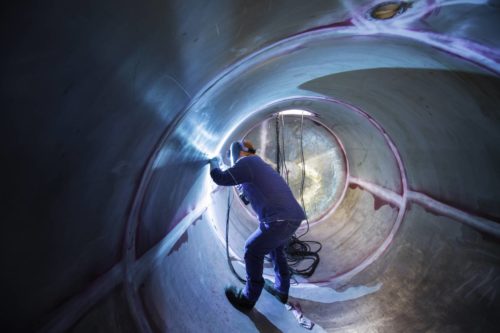
Report | 2021
Pursuing Zero-Carbon Steel in China
A Critical Pillar to Reach Carbon Neutrality
China produces and consumes more than half of the world’s steel, accounting for about 17 percent of the country’s carbon emissions. This makes the steel industry the country’s second largest carbon emitting sector. The decarbonization of China’s steel industry will be a significant contribution to the country’s dual-carbon goals and the world’s carbon reduction goal.
RMI’s latest report Pursuing Zero-Carbon Steel in China—A Critical Pillar to Reach Carbon Neutrality analyses the specific path of China’s steel industry to achieve zero carbon by 2050. The report maps out three steps for the industry’s decarbonization: demand reduction, steel recycling, and switching to low-carbon alternatives.
Specifically, China’s steel production will accelerate to peak by 2024 and decline rapidly to 621 million tons by 2050; secondary steel will change from a supporting role to a mainstay, accounting for 60 percent of total steel production; and zero-carbon primary steel production will grow from nothing to nearly 240 million tons by 2050.
The report builds on RMI and Energy Transitions Commission’s 2019 report China 2050: A Fully Developed Rich Zero-carbon Economy, which provides a comprehensive vision of a zero-carbon scenario for China’s entire economy.
